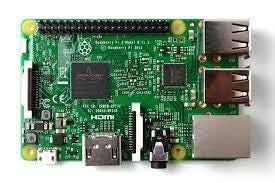Banana Pi Rivals Raspberry Pi
May 9, 2014

Is nothing original and sacred anymore? There's certainly no shortage of single-board computers on the market today, but few have gained the popularity of Raspberry Pi. So what does a company do in order to compete against the fruity computer company with a cornerstone on the market? Why, make an exact replica, of course! Developers, meet Banana Pi.
Banana Pi is an exact replica of Raspberry Pi, except that it offers more memory and a faster processor -- all for $57. Banana Pi features a 1 GHz Allwinner A20 dual-core ARM Cortex-A7 processor and 1 GB of RAM. The card is said to enable the development of wireless servers, computers, games, HD video, speakers, and more, since it is open-source.
Banana Pi also features HDMI and composite video inputs, a 3.5 mm audio input, SD card slot, built-in microphone, 2 USB 2.0 ports, Gigabit Ethernet, an IR receiver, SATA port, Micro USB port for power, and Raspberry Pi-compatible headers, including camera connector and 26-pin header.


On the surface, Banana Pi seems to give the $35 Raspberry Pi a run for its money, as it seems to be the same product. Depending on the intended use and the developer's level of skill, some might prefer Banana to Raspberry. For one developer, however, Banana Pi leaves much to be desired.
The ribbon connectors on Banana Pi feature a different width and pitch, making it incompatible with Raspberry Pi accessories. With this, the GPIO and composite ports are positioned at a larger distance from one another on the Banana Pi, meaning not all Raspberry Pi add-ons will work with the card.
The micro-PC takes longer to boot than its fruity competitor and offers less control, as it automatically logs the user in and goes directly to the LXDE. The Banana also throws quite a fit if an image uploaded so happens to be improperly compressed and resized. Lastly, the card does not yet support a GPU. Don't fret -- the user feedback isn't all negative.
The Banana does, after all, have more memory and RAM than Raspberry Pi, thus enabling web browsing and basic navigation at a tolerable speed. It also supports a range of operating systems, including Android, Android 4.4, Raspberry Pi, Ubuntu, and Debian. The computer chip also supports the app, Scratch.
Banana Pi seems ideal for advanced developers that are looking for a more powerful card. While the Banana does not yet have established software, it does offer more powerful hardware, which can certainly be useful to professional developers. Given its present lack of support, however, the Banana cannot compete with the plethora of Raspberry Pi-friendly resources for the average DIYer.
Related posts:
Unknown Document 273183
Unknown Document 273183
About the Author(s)
You May Also Like





